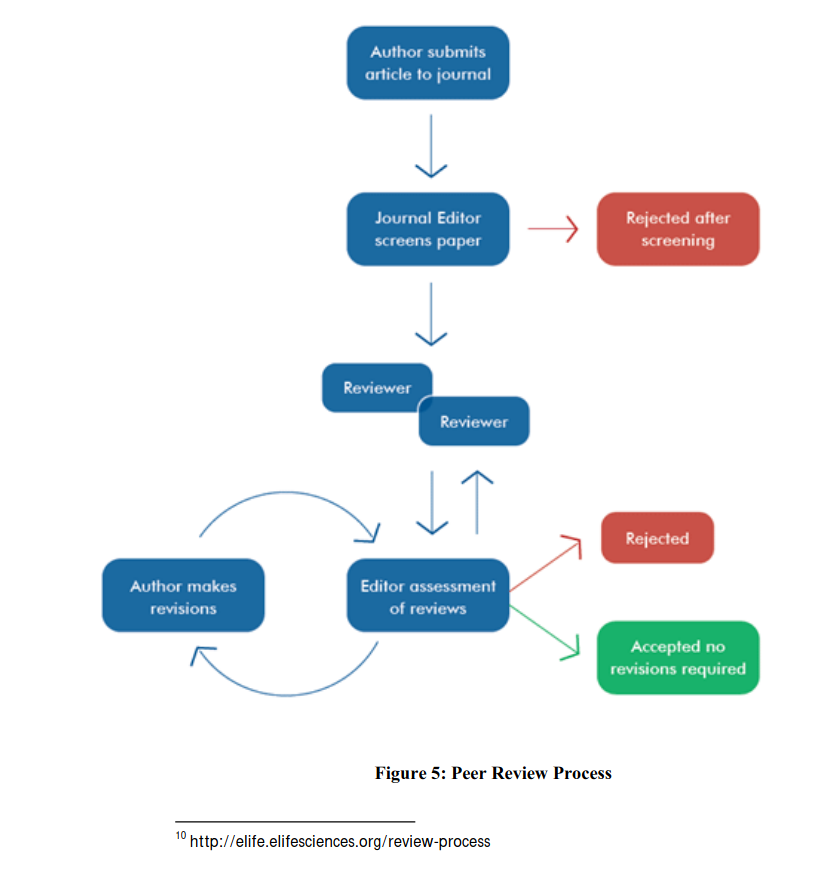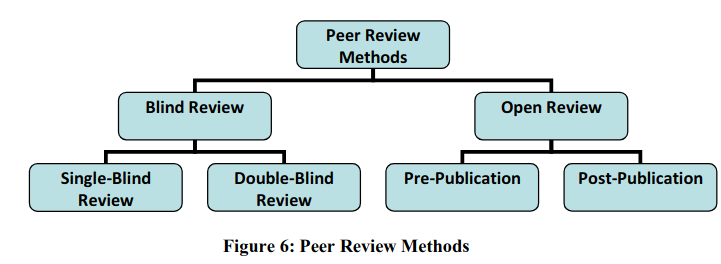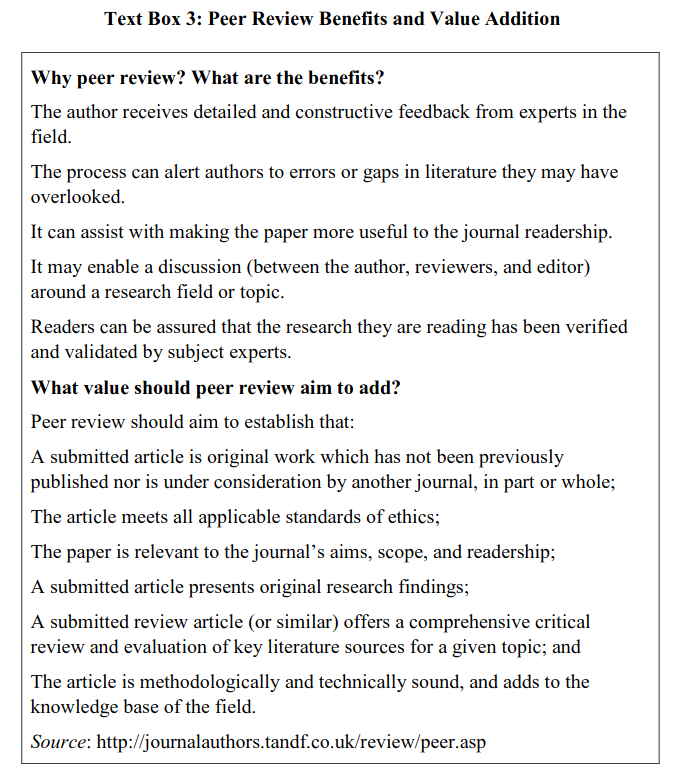2.3 The Peer Review Process
The peer reviewing, being the core of screening process for a submitted manuscript before acceptance in an academic journal is a more exhaustive process of article being considered for publishing. Text Box 3 shows you major aims and different benefits of peer reviewing. Figure 5, (Source: Sense About Science, 2012) elaborates the peer review process as followed in peer-reviewed journal. The journal editor or any other member of editorial board usually screens a submitted paper to see if the submitted manuscript is relevant to journal’s scopes and subject coverage; whether suitable for the journal’s targeted audiences; finally, whether it meets journal’s selection criteria. Here journal editor can out-rightly reject a submitted manuscript, where authors do not meet any of the above-mentioned points. If editor is satisfied with the contents of a submitted manuscript, then the manuscript is sent to two or more reviewers. The reviewers are subject experts and they have long publishing or 21research experiences in the field. They thoroughly review the submitted manuscript on the guidelines given by the editor and give critical comments on different aspects of the paper, viz., relevance of the paper to the scope of the journal, importance of the topic in the current scenario, literature review, research design, and scientific evidences provided, relevance of conclusion, etc. They may also identify flaws in research design, sampling, analysis, conclusion and other shortcomings of the submitted manuscript. Then based on reviewers’ comments, editor rejects or accepts or asks the author to revise the paper as suggested by the reviewers for a paper for publishing in the journal. Editor makes assessment of reviews received from different reviewers. Based on his own judgement and agreement along with any other member of editorial board, editor takes decision on acceptance of a submitted manuscript. If the manuscript is accepted, authors also require providing additional information or clarify points as sought by the reviewers or editor. Authors also need to justify shortcomings as pointed by the reviewers or editor. In most of the cases authors make revisions before final acceptance of a paper. Peer review is an iterative process that requires intellectual inputs from both authors and reviewers. Majority of scientific journals follow any of the four editorial decisions on acceptance of submitted paper after completion of its peer review process. Nature journal elaborates it more clearly:
- Accept, with or without editorial revisions.
- Invite the authors to revise their manuscript to address specific concerns before a final decision is reached.
- Reject, but indicate to the authors that further work might justify a resubmission.
- Reject outright, typically on grounds of specialist interest, lack of novelty, insufficient conceptual advance or major technical and/or interpretational problems.
As indicated in Figure 6, scientific journals follow any of the four different methods of peer reviewing. There are two broad methods, namely, Blind Review and Open Review. Blind review methods usually follow pre-publication peer reviewing, i.e., peer reviewing before acceptance of a paper in a journal. On the other hand, Open Review methods follow both pre-publication and post publication peer reviewing. Pre-publication peer review follows two broad methods, namely: (i) Single-Blind Review where reviewers know the authors but the reviewer's name is not disclosed to the author; (ii) Double-Blind Review where the identity of the reviewers and the authors are not disclosed to either party. In Open Review methods, no identities are concealed; both author and reviewer names are disclosed. In Pre-Publication Open Review, any comment related to a submitted manuscript of a paper, which is normally mediated by the editor, can be posted by reviewers before the journal publishing an article. It only can be posted by the reviewers pre-assigned by the editors. In Post-Publication Open Review, any reviewer comments related to a submitted manuscript of a paper, which is normally mediated by the editor, can be posted by readers and reviewers after the article has been published. The eLife journal10 (ISSN 2050-084X) follows more transparent peer reviewing method with some innovative ways to keep editorial decision accessible to its scientific audiences and prospective authors. In eLifejournal articles, readers can track reviewers’ comments and get tips on the manuscript enrichment or revision process. An eLife journal article makes online availability of full-text contents, figures and data. It also gives access to:
- Decision letter, highlighting comments of the reviewers;
- Author response, clarifying reviewers’ comments and how that has enriched the submitted version;
- Leave a comment, anybody can post critical comments on the article and comments are filtered by the editor before posting online.



